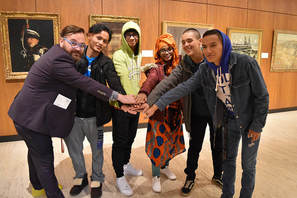By Gonzalo Casals, Museum Maverick for the Mohawk Valley Session  For over a decade, LaPlaca-Cohen, a marketing and design consultant serving cultural organizations, has been studying Americans’ behavior in relation to cultural consumption. Culture Track 2017 is the current iteration of such study that looks at how different generations define, access, and relate to cultural experiences. Some of the key findings are trends that have been solidifying in the last decade. For instance, millennials have expanded the definition of culture to include categories and experiences such as food festivals and television, both forms of entertainment that a decade ago would have fallen way outside traditional disciplines. Newer generations are also redefining the way they consume culture, seeing themselves as active participants rather than passive audiences. Opportunities in which one can interact, share, and affect a cultural experience are the most popular among millennials. This generational shift in cultural consumption is unfolding at the same time that the US is experiencing dramatic demographic shifts. A phenomenon once experienced only by large US cities is now expanding across the rest of the country. The rapid growth of Latino communities in the US, refugee relocation programs across the states, and immigrants leaving behind large metropolitan areas in search of more affordable lives in smaller cities and towns have contributed to this phenomenon. City administrations, public school and library systems, and churches and other civic institutions are now faced with the challenge to rethink their public service in order to accommodate an increasingly diverse population. Museums and other cultural organizations are also struggling to shift their cultural offerings in order to accommodate these new participants that demand more interactive, relevant cultural experiences.
0 Comments
|
Archives
October 2020
Categories
All
|
 RSS Feed
RSS Feed